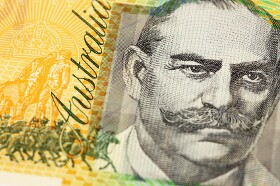The Australian dollar traded lower for the most part today as traders’ optimism was evaporating. The relatively positive Chinese macroeconomic data was unable to provide the Aussie a boost. Economic indicators in Australia itself were mixed.
The Australian Bureau of Statistics reported that import prices fell in the March quarter by 1.0% instead of rising at the same rate as analysts had predicted. Year-on-year, though, the prices increased by 0.9%. The main contributors to the quarterly decline were petroleum, petroleum products and related materials; inorganic chemical; road vehicles (including air-cushion vehicles). On the other hand, gains were registered in gold, non-monetary (excluding gold ores and concentrates) as well as telecommunications and sound recording and reproducing apparatus and equipment. Export prices rose by 2.7% on a quarterly basis and by 2.3% on an annual basis. The biggest contributors to the rise were gold, non-monetary (excluding gold ores and concentrates); metalliferous ores and metal scrap; gas, natural and manufactured; meat and meat preparations. Meanwhile, the biggest declines occurred in petroleum, petroleum products and related materials as well as non-ferrous metals.
The Reserve Bank of Australia reported that private sector credit rose by 1.1% in March, accelerating from 0.4% in February. Analysts were expecting a slowdown to 0.3%.
AUD/USD fell from 0.6555 to 0.6541 as of 10:16 GMT today. EUR/AUD rose from 1.6574 to 1.6621. AUD/JPY was about flat at 69.75.
If you have any questions, comments, or opinions regarding the Australian Dollar, feel free to post them using the commentary form below.
Australian Dollar Soft as Market Sentiment Worsens
